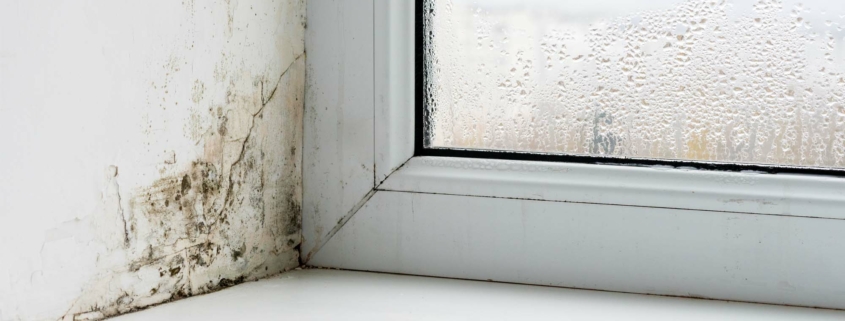What Causes Mold in Your Home
Recently we wrote a blog explaining why it’s important to inspect for mold in your home. In this blog, we will dive deeper and explain what causes mold in your home. With this information, you will be able to proactively take steps to address the potential causes of mold.
Mold in your home isn’t just an unsightly inconvenience. It can also pose significant health risks and structural problems if left unchecked. Understanding what causes mold to grow is the first step in combating this common household issue. This blog explores the various factors that contribute to mold growth in your home, offering insights and tips to help you keep your living space healthy and mold-free.
Understanding Mold
Before we dive into what causes mold in your home let’s take a moment to understand what mold is. Mold is a type of fungi that thrives in moist environments. It reproduces through tiny spores that travel through the air. When these spores land on a damp spot indoors, they may begin to grow and multiply. Molds have a crucial role in nature by breaking down dead organic matter, but when they grow indoors, they can pose health risks to humans.
The Primary Culprit That Causes Mold in Your Home
At the heart of every mold issue is moisture. Mold spores are always present in the air, but they only grow into visible mold when they land on damp surfaces. Various sources can introduce moisture into your home, including:
- Leaks and Flooding: Water leaks from pipes, roofs, or windows can create ideal conditions for mold growth, especially if the moisture remains undetected or unaddressed for extended periods. Similarly, homes that have experienced flooding are at high risk for mold development unless they are dried out thoroughly and promptly.
- High Humidity Levels: Areas with high humidity levels, typically above 60%, can encourage mold growth on walls, ceilings, and other surfaces. Bathrooms, kitchens, and basements are particularly susceptible due to activities like cooking, bathing, and laundry, which add moisture to the air.
- Condensation: Cold surfaces in your home can cause condensation when moist air comes into contact with them. This is commonly seen on windows, pipes, and walls, providing a perfect breeding ground for mold spores.
- Inadequate Ventilation: Poor ventilation traps moisture and prevents it from discharging outside, increasing humidity levels inside your home. This problem is particularly prevalent in modern homes that are built to be energy efficient, often at the expense of adequate airflow. Ensuring your home is well-ventilated, especially in areas prone to moisture like the kitchen and bathroom, is crucial in preventing mold growth.
Organic Materials: A Mold Feast
Mold feeds on organic materials found in common household items such as wood, paper, carpet, and even dust. When these materials become damp or wet, they provide not just a home for mold spores but a food source as well, allowing mold to flourish. If excessive moisture or water accumulates indoors, mold growth often will occur, particularly if the moisture problem remains uncorrected.
Temperature
While mold can grow in a range of temperatures, it prefers warmer conditions typically found in homes. Some types of mold are more temperature-resistant and can grow in cooler environments, but the warmth of a typical home provides an ideal climate for many common molds.
Preventing Mold Growth
Knowing what causes mold in your home is the first step; the next is taking proactive measures to prevent it. Here are some tips to keep your home mold-free:
- Control Humidity Levels: Use dehumidifiers and air conditioners to maintain indoor humidity levels between 30-50%.
- Improve Ventilation: Ensure adequate ventilation in moisture-prone areas. Use exhaust fans in bathrooms and kitchens, and open windows when weather permits.
- Fix Leaks Promptly: Regularly inspect your home for leaks and fix them immediately to prevent moisture accumulation.
- Dry Wet Areas: Any area of your home that becomes wet, whether from leaks, spills, or flooding, should be dried within 24-48 hours to prevent mold growth.
- Clean and Vacuum Regularly: Reducing dust and potential organic materials for mold to feed on can help prevent its growth.
Conclusion
Mold in your home is a pervasive issue. It stems from a combination of moisture, inadequate ventilation, the presence of organic materials, and favorable temperatures. By understanding these contributing factors, homeowners can take effective steps to prevent mold growth and protect their homes and health. Regular inspections and maintenance, humidity control, and proper ventilation are key strategies in the fight against mold. Remember, the best defense against mold is prevention.
There’s no substitute for experience and expertise when it comes to mold detection. When considering a new home purchase, booking a certified mold inspection with CMS Home Inspection should be an essential step in the home-buying process. And, to protect your family’s health you should regularly inspect for mold in your home if you have any moisture issues in your house. Click here if you want to schedule a mold inspection today!




Leave a Reply
Want to join the discussion?Feel free to contribute!